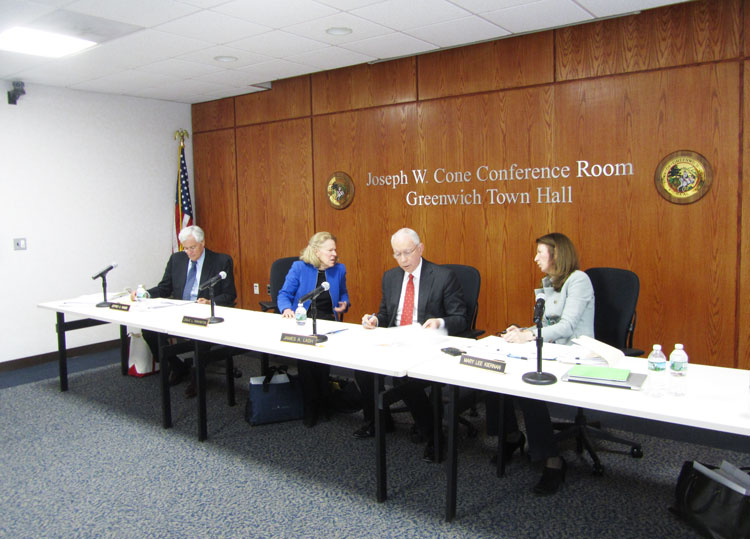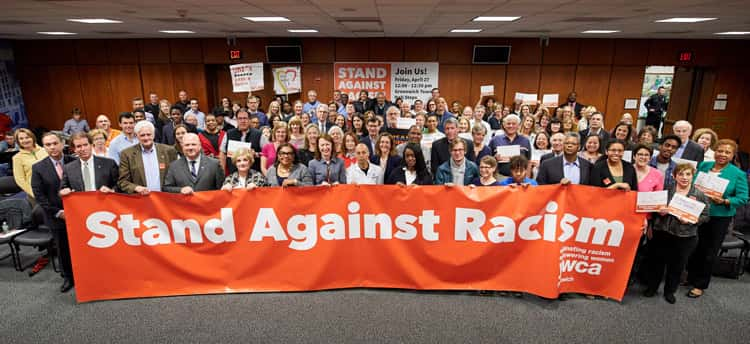
By Bill Slocum
Contributing Editor
The New Lebanon Building Committee formally presented Tuesday night a $37.5 million project cost for a new elementary school in Byram, a reduction in price of about $4 million from an estimate that had raised eyebrows two weeks ago.
Speaking before the Board of Estimate and Taxation’s Budget Committee, the chair of the New Lebanon Building Committee, Steve Walko, said his committee had “gone back to square one” to reduce their estimate, in collaboration with architect Tai Soo Kim and construction manager Gilbane.
“We think we are ahead of the curve,” Walko told the Budget Committee regarding planning for the project. “In its totality, we are confident in the [$37.5] number.”
The discussion was a carryover from Budget Committee deliberations two weeks ago, part of the annual town budget formulation process, in which a $40 million figure for New Lebanon School caused consternation, both with the Budget Committee and the rest of the BET.
Walko presented numerous handouts Tuesday in an effort to comply with Budget Committee chair Jim Lash’s request to “squeeze the uncertainty” out of the project.
The new $37.5 million figure is still significantly above the $32.8 million budgeted for the school in an earlier planning phase, but Walko indicated there are numerous ways the town might be able to save additional money. In particular, he noted anticipated reimbursement from the state could be enhanced if the school attracts enrollment well over its current figure.
At the moment, 275 children attend New Lebanon School, including kindergarten students who attend classes offsite at the Byram Archibald Neighborhood Center. But Walko and Board of Education chair Laura Erickson said the figure could rise by well over 100 students once such factors as a preschool program and drawing magnet students are counted.
Erickson warned that underestimating the number of likely additional students could cost the town reimbursement money from the state, a situation that in fact happened in a prior school rebuilding.
“At Glenville, we estimated 370 students and had 450 students,” she noted. “We didn’t get the benefit of that from the state.”
“If we have more students than we budget for, the state will just say ‘Good job’ and move on,” Lash agreed. “There’s no incentive for use to underset, based on our Glenville experience.”
The anticipated increase in students was also a point raised to explain the size of the classrooms proposed at New Lebanon, larger than the school’s current classroom size and questioned as excessive.
According to figures passed out by Walko, 15 classrooms proposed for first- through fifth-grade instruction at New Lebanon range in size from 782 square feet to 940 square feet, in line with an 850 square-foot size which were specified as desirable at the start of the planning process. Six other classrooms, larger in size, would serve kindergarten and preschool students.
Addressing Budget Committee concerns that the school building would include excessive non-instructional space, Walko presented a floor-area breakout showing 18,490 square feet of the proposed building going to instructional space, 6,602 square feet going to special instruction and special education, 2,600 square feet for administration and support space, and the rest, 12,183 square feet, used for common areas such as a library, cafeteria and gymnasium.
“One of the questions asked of me is how much of the space is instructional space,” Walko said. “Roughly 60 percent.”
Walko also addressed other Budget Committee concerns, including the use of modular classrooms, either at Western Middle School or the Williams Street field just off-campus from New Lebanon, while the school is rebuilt. He also discussed concerns about soil contamination at New Lebanon School, saying as the present school was built on a rocky outcropping there is little likelihood of contamination, a surmise borne out by preliminary tests.




